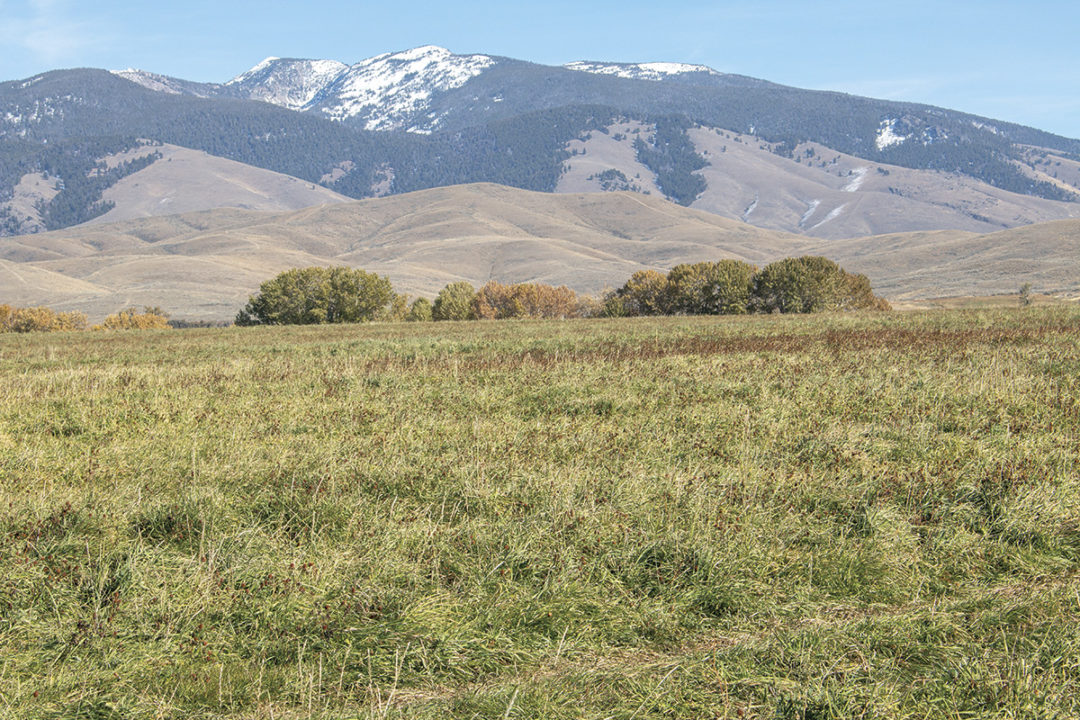The real goal of every livestock producer is to maximize the amount of energy captured by the sun in the range or pasture allotted to them. Unfortunately, most beef producers did not get into the business because they are passionate about plants. Most have a natural way with animals, and then the plants become a necessary concern once it impacts animal performance. If this describes you, fret not. I would like to use this article to discuss how to go about evaluating your pasture to maximize animal performance.
The truth is, there are very few pests that can outcompete a properly maintained pasture. Grazing and regrowth are a natural cycle in nature and should occur frequently and in coordination with one another. But like all things in nature, there must be a balance, and often we don’t know when we are out of balance until we have a wreck. It is important to regularly evaluate your pasture conditions and adjust your management strategies accordingly.
Let’s walk through your pasture and evaluate the situation. As you get down and look at a single grass plant, ask yourself: When was the last time this plant was grazed? How often does an animal have a chance to graze this plant? How long does this plant have to regrow without threat of an animal biting a chunk out of its hard-earned growth? Then stand up and look around. How much bare ground is there? How many weeds do you have compared to desirable plants? How vigorous does the grass look? When was the last time you had a soil test?
Proper maintenance
“Maybe I should just take the whole thing out and start over.” This is a common phrase I hear when talking to people about their pasture. They might be right, but more often than not they are wrong. Let’s be honest, most people want a one-time big-job solution that doesn’t require constant management. Good pastures are made through proper maintenance, and a big fix isn’t going to fix poor management. But I have seen time and time again where a little management will bring terrible pastures back from the brink of despair.
If you are seeing more bare dirt than grass, you will need to start thinking about seeding it in with desirable plants. You do not necessarily need to kill out desirable plants to plant, but I would recommend that you change your management strategies to favor new grass over old grass. You will need to keep animals off newly planted pastures for at least one growing season.
The best situation is for a pasture plant to have half of its weight removed and then be left alone for several weeks to regrow. Since cool-season grasses grow faster in the spring and fall, and summer grasses grow better with heat, it is hard to define what “several weeks” is for each operation. The exact number can vary between two to six weeks, but ideally the grass would be grazed in the boot stage, or right before the seedhead emerges. Once the grass has been grazed, animals should not be allowed access until it has regrown to its original weight once again. This is often called “rotational grazing” or “stock grazing.” The basic principle is harvest half and let it recover.
Species selection
When planting a new pasture, species selection is vital. Make sure to consult with local advisers about what grows well in your area, such as your local extension service or Natural Resources Conservation Service. The species you may choose will depend on a wide variety of factors including elevation, length of growing season, annual precipitation, soil types and textures, average daily temperatures, irrigation, soil moisture availability, erosion potential, topographical exposure, fire resistance, grazing management styles, nutrient balance of plants and biodiversity. This all might sound overwhelming, but consulting with experts in your area will help you narrow the choices down.
Once you find several options, you can pick the best depending on yield, quality and palatability for the animals you will be using for grazing. One resource for this is the Intermountain Planting Guide, which is free online. This planting guide is full of information on plants that perform well in the Intermountain West and contains information about proper planting methods and establishing new pastures and ranges. Species can be selected from this guide based on annual precipitation and other factors.
Nutrient and weed management
Like all plants, pasture grasses need adequate amounts of nutrients such as phosphorus, potassium, sulfur and iron to reach maximum forage production. The only way to know what is available in the soil for your pasture to use is to get a soil test. Soil tests are important to determine nutrient levels, pH and salinity and should be done at least every five years. All the elements mentioned should be added before planting, if a soil test indicates low levels.
Nitrogen is the biggest nutrient requirement of a grass-dominant pasture and should be applied within one year of planting. Nitrogen requirements vary depending on species, soil and target yield, but recommendations can vary anywhere from 40-200 pounds per acre. Nitrogen is usually added annually. Incorporating a legume species such as alfalfa, clover, sainfoin or birdsfoot trefoil will dramatically reduce the amount of nitrogen needed by the pasture. I highly recommend using a legume if possible.
It would not be logical to use a legume when there is a significant weed problem in the pasture. Weeds are often defined in a pasture setting as something that livestock will not eat, will make them sick or will reduce yields. Weeds often infiltrate a pasture during planting when competition is limited, but they can also be introduced through irrigation water, wind, manure or equipment. Older pastures needing some reclamation often have an unhealthy seedbank built up and may take years to control.
Oftentimes weeds proliferate because a pasture is overgrazed, and the weeds encounter little competition. Prevention is of utmost importance. A properly grazed and well-maintained pasture rarely has significant weed problems because the grass will outcompete most weeds. If you find your pasture is being invaded with more weeds than you would like, then additional control measures are necessary. Residual herbicides such as aminopyralid and metsulfuron methyl can be effective tools against pasture weeds. Make sure to read and follow all label instructions because they often have requirements about where the hay and manure can be used. Biennial and perennial weeds are often more effectively controlled with fall applications of herbicides.
Managing your pastures does not have to be as hard as we often make it out to be. Pick good grasses. Rotate your animals. Watch your nutrients and keep weeds down. Managing for these problems will not only save you from tearing out an entire pasture but will prevent you from getting to a position of thinking that ever again.
Joseph Sagers is an extension educator at the University of Idaho. Email Joseph Sagers.







